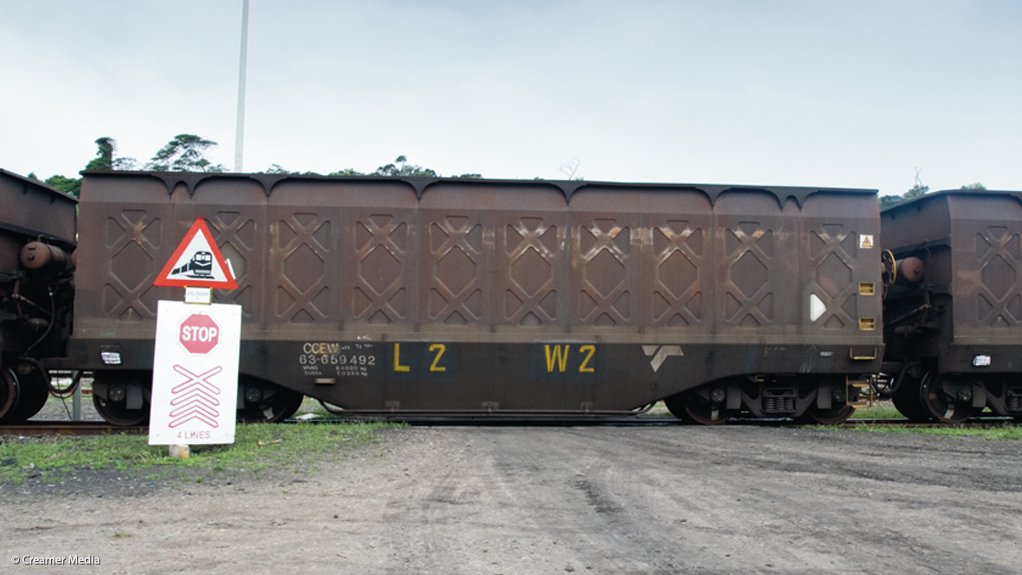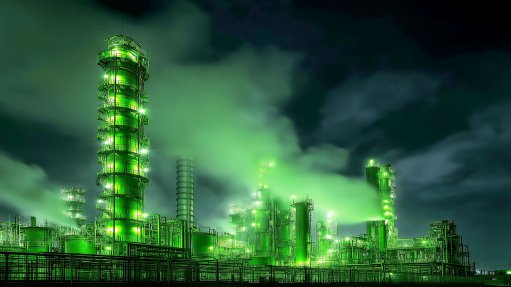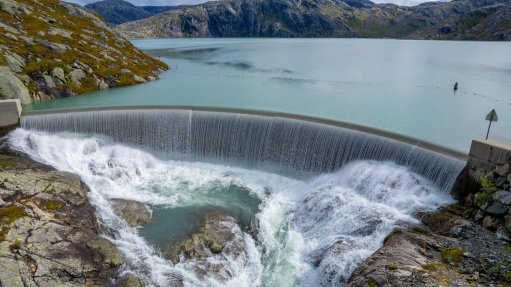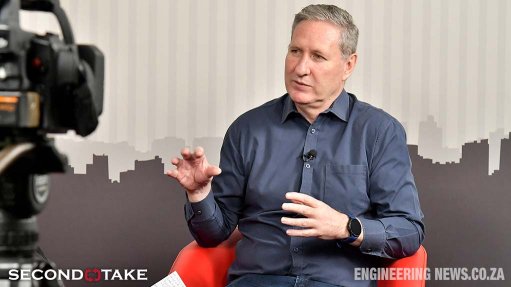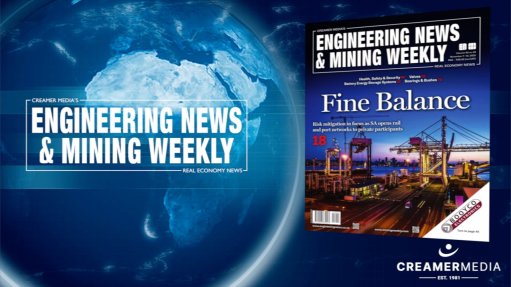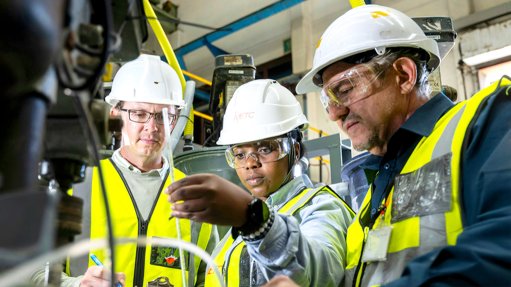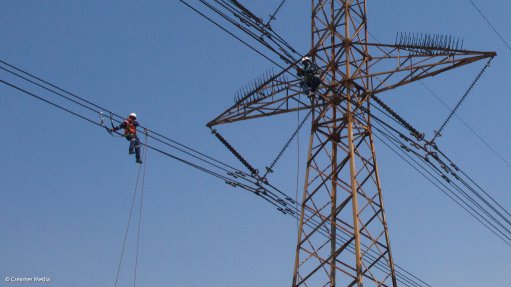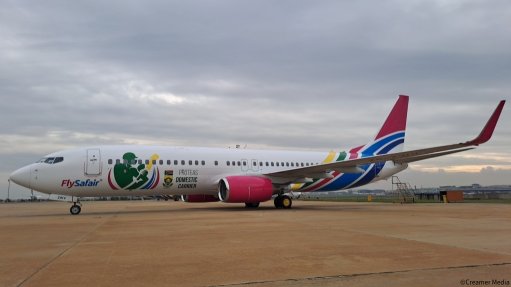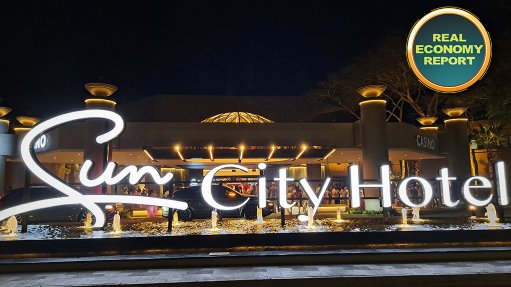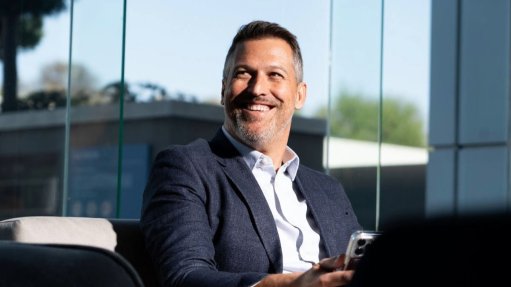Level crossing incidents not only cost lives but also the economy, TFR CEO says
Railway safety incidents, such as pedestrian and vehicle collisions at level crossings, are not only tragic but are severely undermining South Africa’s rail recovery plans, Transnet Freight Rail (TFR) CEO Russell Baatjies said on November 14.
“We’ve had 36 level crossing incidents just this year, and we've lost 41 lives. We all want Transnet to succeed and we all want [the Passenger Rail Agency of South Africa] to succeed. We want these new operators to succeed when we open up the network, but it cannot be at the cost of lives,” he said.
Speaking at the inaugural Railway Safety Imbizo in Kempton Park, he explained that collisions and near misses not only led to loss of life and lasting trauma for families and communities, but that the economic damage that resulted was also of significant concern.
“Beyond the human toll, these incidents also disrupt travel, local economies and can cause significant damage to the environment. When we experience these incidents, we have operational disruptions. The trains come to a standstill. Cargo cannot reach its destination,” Baatjies said.
The South African rail network has 6 452 level crossings, of which about 1 500 belong to TFR. Many of them are privately managed.
"All of these we need to make sure are safe, so that when people cross these level crossings, they do it in a safe manner and without these consequences that we've seen,” he said.
He said such incidents resulted in damage to assets at “massive cost”, along with train service disruptions.
“We have to get massive equipment from all over the country to a specific site to come and recover the area. Train services are disrupted. Often we cannot repair [the locomotives]. The same goes for wagons. For that period, whether it's bulk commodities or consumer goods, they cannot reach their destinations,” Baatjies said.
He detailed the financial impact on TFR, which was all the more damaging given that the rail operator was in the midst of trying to implement its rail recovery plan.
“For this year, we've lost 5.6-million tonnes in volumes that should have been moved just because of disruptions to the service at an estimated cost of R1.1-billion in revenue.
“TFR also incurs substantial risk-related expenses due to the asset repair, incident response and risk management efforts, amounting to R2.4-billion in the previous financial year. These incidents have a severe impact on our recovery plan,” Baatjies lamented.
Given these and other challenges facing TFR, he said it was unlikely that the goals of the recovery plan would be achieved within the 18-month frame originally envisioned.
"I suspect it will go beyond the 18 months, but we'll see. We’re still going to need to recover even beyond March next year,” he said.
However, Baatjies said progress was being made nonetheless.
"We’re just about a year into this recovery plan, and you can see, slowly but surely, we’re increasing the volumes. Year-on-year, we've grown the volumes by more than four-million tonnes. We’re still not where we want to be, but we’re moving in the right direction,” he said.
Baatjies said the TFR infrastructure still needed a lot of work, highlighting signalling as a major concern.
“We have to do a lot of manual authorisation. If the signals are working, you don't have to go through those processes. You either get a red or green light. But these are the things that contribute to all the delays and the issues that we have in the infrastructure. If you modernise the system and you get it in a better condition, you won't have these issues,” he said, highlighting the need to also improve security and TFR locomotives.
Baatjies called on all stakeholders to unite in campaigning for safer railway crossings, noting that the operators could only do so much in terms of internal safety training.
“Railways are a shared resource, connecting cities and communities, moving goods and people and supporting economic growth. But with this vital network comes shared responsibility.
“Preventing railway incidents isn't solely the job of railway companies or government agencies. It requires the active involvement of the people who live and work near railways, as well as the drivers, road users, cyclists and pedestrians we interact with,” he said.
He noted that a lack of education was part of the problem.
“Many people may not fully understand the risk involved in walking along railway lines or misjudging the speed of an approaching train. These trains are not easy to stop. A car can stop within a few meters.
“Trains often take half a kilometre to stop, depending on whether it's loaded and how heavy the train is. The train is unable to stop at short notice, over a short distance. We must always bear that in mind,” Baatjies said.
He lamented the impact that railway crossing collisions had on railway employees as well.
“Sometimes all a train driver can do is to brace for impact and try to control the train so that does not derail. Our drivers are well trained, but no one trains you for the trauma of an unavoidable crash [and the] loss of life.
“When we have these incidents, these train crews, we have to send them for psychiatric assistance. This is a traumatic experience, seeing that you were involved with the loss of life. Sometimes people don't return to the train driver duties,” Baatjies said.
He urged railway stakeholders in both the public and private sectors to continue expanding on community education campaigns to help the public understand the risks, to teach them how to approach level crossings safely, and to discourage dangerous behaviour such as trespassing on railway property.
He said railway safety needed to be made a priority in urban planning and infrastructure development.
“As our communities grow, we must work together to ensure that rail crossings are as safe as possible. This might involve adding more visible warning signs, improving lighting, or installing barriers and gates in areas where incidents are more likely to occur.
“By involving community leaders and the residents in these conversations, we can make sure that safety measures reflect the specific needs and the realities of each community,” Baatjies said.
He added that technology could play a bigger role at level crossings, with advances in monitoring and signalling systems allowing TFR and other railway operators to improve early warning systems, while installing cameras could deter risky behaviour. He also suggested the use of automated alerts to notify road users of an approaching train.
“I have personally interacted with some of the family members of those who have tragically lost their lives [at level crossings]. The nature of these train incidents, if you've visited any of these sites, it's beyond comprehension. Just the sheer nature of the incident that took place, it's not a nice sight. The devastation and sadness caused by these incidents should never be lost on us. We simply have to do better,” Baatjies said.
Article Enquiry
Email Article
Save Article
Feedback
To advertise email advertising@creamermedia.co.za or click here
Comments
Press Office
Announcements
What's On
Subscribe to improve your user experience...
Option 1 (equivalent of R125 a month):
Receive a weekly copy of Creamer Media's Engineering News & Mining Weekly magazine
(print copy for those in South Africa and e-magazine for those outside of South Africa)
Receive daily email newsletters
Access to full search results
Access archive of magazine back copies
Access to Projects in Progress
Access to ONE Research Report of your choice in PDF format
Option 2 (equivalent of R375 a month):
All benefits from Option 1
PLUS
Access to Creamer Media's Research Channel Africa for ALL Research Reports, in PDF format, on various industrial and mining sectors
including Electricity; Water; Energy Transition; Hydrogen; Roads, Rail and Ports; Coal; Gold; Platinum; Battery Metals; etc.
Already a subscriber?
Forgotten your password?
Receive weekly copy of Creamer Media's Engineering News & Mining Weekly magazine (print copy for those in South Africa and e-magazine for those outside of South Africa)
➕
Recieve daily email newsletters
➕
Access to full search results
➕
Access archive of magazine back copies
➕
Access to Projects in Progress
➕
Access to ONE Research Report of your choice in PDF format
RESEARCH CHANNEL AFRICA
R4500 (equivalent of R375 a month)
SUBSCRIBEAll benefits from Option 1
➕
Access to Creamer Media's Research Channel Africa for ALL Research Reports on various industrial and mining sectors, in PDF format, including on:
Electricity
➕
Water
➕
Energy Transition
➕
Hydrogen
➕
Roads, Rail and Ports
➕
Coal
➕
Gold
➕
Platinum
➕
Battery Metals
➕
etc.
Receive all benefits from Option 1 or Option 2 delivered to numerous people at your company
➕
Multiple User names and Passwords for simultaneous log-ins
➕
Intranet integration access to all in your organisation



